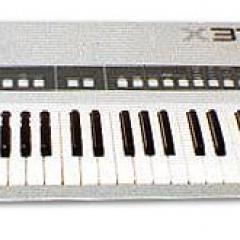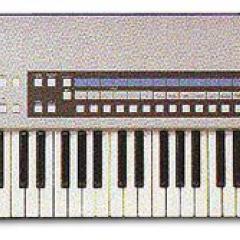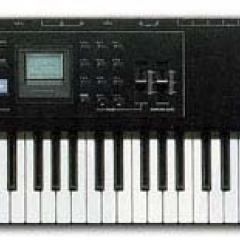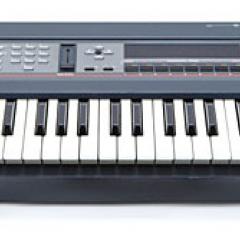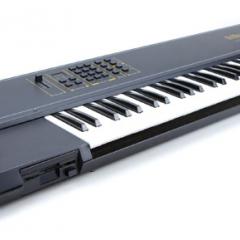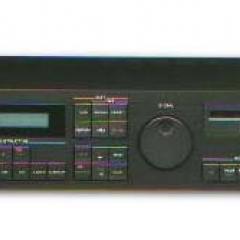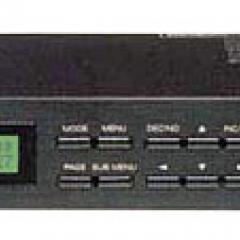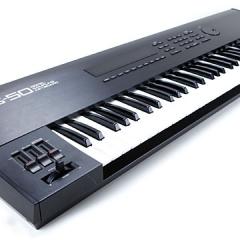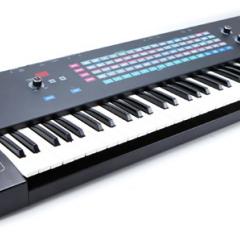Roland S-10

The Roland S-10 is a very limited consumer-grade keyboard sampler. Its sampling specs are limited to a 12-bit, 30kHz sample-rate. With only 256k of internal memory spread over 4 banks (64k per bank) you get a maximum sample time of 4.4 seconds (1.1 seconds per bank). That's hardly enough for any serious music production. Samples can be stored and loaded on a built-in 2.8" floppy disk system called the Quick Disk drive (which isn't very quick by today's standards). Fortunately the 4 sample banks translate to 4-part multitimbrality in which the 4 banks can be played simultaneously, split and layered across the keyboard and so on.
Roland has created some nice libraries for the S-10 which are on disk. If you find yourself looking for a very cheap sampling keyboard for general fun and use, make sure you get these sample libraries with the S-10. To create your own samples, although the S-10 has its limits, sampling is pretty easy and was designed for any novice to intermediate player. 30kHz or 15kHz sampling is available, and the S-10 has a pretty good auto-loop feature. The 12-bit resolution and 30-15kHz sample-rates mean lo-fi quality (which you might find desirable). Further edit parameters include sample trimming, looping, reverse, tuning, envelope editing, filtering, velocity effects and hi-pass or low-pass filtering. All this editing is achieved by assigning the parameters to a dial or wheel just like the Alpha Juno series.
The MKS-100 is a rackmount version of the S-10, but the S-220 is an upgraded and enhanced rackmount version of the S-10 / MKS-100 that appeared in 1987. Both the S-10, MKS-100 and S-220 make ideal entry-level instruments for anyone interested in keyboard samplers. The S-10 has been used by D:ream.
Demos & Media
Specifications
Websites of Interest
Resources
Images from SynthSite.
